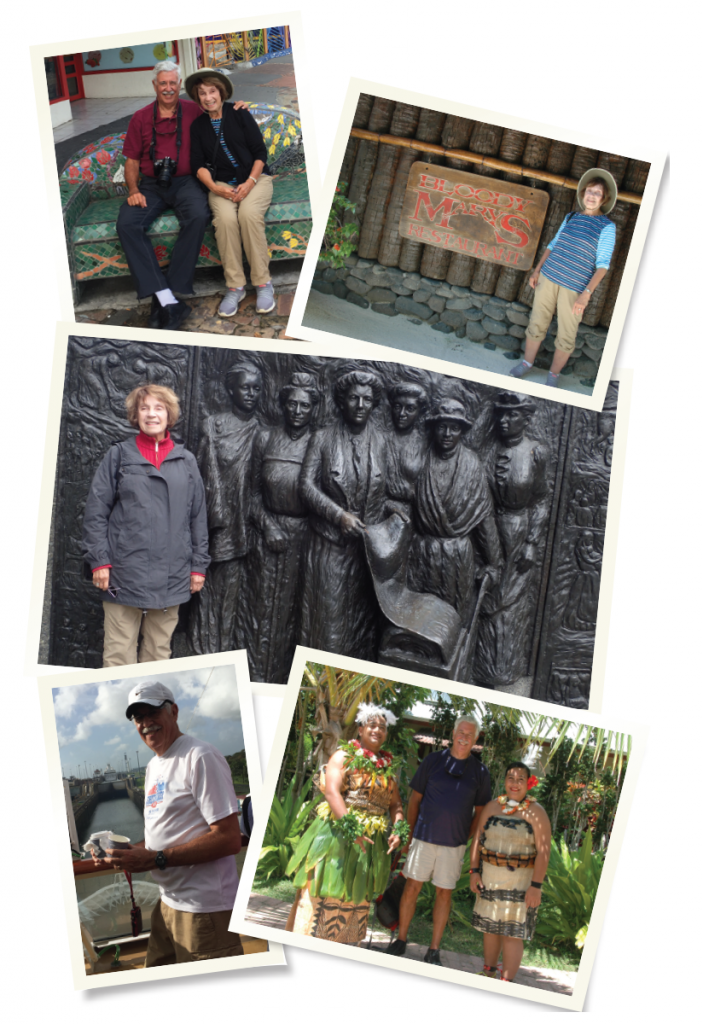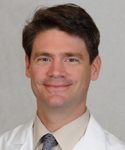Several years ago, Ed Herzig, MD, and his wife, Andrea (Andi), spent one week on a Smithsonian cruise that traveled along the western part of the Amazon river, the world’s second longest river, which cuts across seven South American countries. They actually swam in the river, fished for piranha and spotted primitive Peruvian river villages.
Still, that doesn’t come close to their current adventure. As of this writing, the couple is 54 days into a 141-day ocean cruise that will visit 67 ports in 48 different countries. At the age of 72, the retired internist and rheumatologist explains that he and his wife are enjoying their good health by visiting the remaining places on their bucket list. Because this cruise checks off about 80% of countries they wanted to visit, they climbed aboard.
He says this voyage is first class and especially appreciates the free laundry service. Dr. Herzig and Andi are sharing a 220 sq. ft. cabin.
“We only had to unpack once, and we don’t have to worry about sitting in airports for hours, waiting for flights,” says Dr. Herzig. “We sail into harbors. The crew lowers the gangplank. We get off and are on our way.”
Throughout the decades, Dr. Herzig and his family have visited 48 U.S. states, excluding Arkansas and Alaska, and traipsed through Israel, Peru, Hong Kong and Western Europe.
His Career
But extensive traveling wasn’t always part of Dr. Herzig’s lifestyle. After graduating from the University of Cincinnati College of Medicine in 1971, he was grounded for the next two years while completing his internship and junior residency at Boston City Hospital. In 1973, he joined the U.S. Air Force as a captain, spent two years in Taiwan and Texas as a general medical officer, and completed his service with the rank of major.
He returned to the University of Cincinnati in 1975 to complete four more years of medical training as a senior resident, chief medical resident and fellow.
During the next 30 years, he accomplished many goals. He formed the Internists of Fairfield, Ohio, which grew to a 10-person practice, and joined Mercy Health in Cincinnati 2009, where he continued practicing as a rheumatologist, was named chair of Mercy Health Physicians and Mercy Select and later chaired the organization’s physician group. He also served on the ACR’s Board of Directors, chaired RheumPAC and was recognized by the ACR as a Master for his outstanding contributions to the association and rheumatology field.
Travel Lessons

Top left: Andi and Ed Herzig on a bench in Kawkawa, near Russell, New Zealand, which was decorated by the artist Friedensreich Hundertwasser. Top right: Andi Herzig. Middle: Andi Herzig at the Kate Sheppard memorial in Christchurch, New Zealand. Ms. Sheppard led the successful effort to gain women the vote in New Zealand in 1893. New Zealand was the first country in the world to grant women suffrage. Bottom left: Dr. Herzig at the Panama Canal Crossing. Bottom right: Dr. Herzig is welcomed to Tonga.
He always enjoyed relating to patients, and he now uses those same communication skills when interacting with people around the world.
He tells the story of a Cuban cab driver who was driving the Herzigs to a restaurant in a vintage 1954 Ford Fairlane with a stick shift. “I turned to the driver and said, ‘Ya know, the very first car I drove was just like this,’” Dr. Herzig recalls. “The driver looked at me and said, ‘You must be really old.’”
The Herzigs started their journey in December in Miami. They sailed to Cuba, Costa Rica, Panama, the Panama Canal, Guatemala and Mexico before stopping in Los Angeles to pick up additional passengers. Since then, they have traveled throughout the South Pacific, touring beautiful, lush islands, including Nuku Hiva, Fiji and Tonga. The Viking ship carrying 930 passengers and 466 crew members then sailed to New Zealand and Australia. In the months ahead, the ship will head toward Indonesia, Malaysia, Singapore, China, Thailand, Vietnam and Cambodia. The couple will also spend six days on land in India, before sailing to other countries off the Arabian Peninsula and Mediterranean Sea. Their journey ends in London.
Meanwhile, Dr. Herzig says he’s learning many interesting facts about the world around him. He found it surprising that the literacy rates in Cuba, Nicaragua, Guatemala, Panama and Costa Rica, which fall between 97 and 99%, are higher than in the U.S., where 37 million adults can’t read above a fifth grade level, according to the U.S. Department of Education.
So far, the Herzigs have felt welcomed everywhere they go. He says his knowledge of geology and geography has expanded enormously. He finds the cultural disparities most interesting. For example, he says, the Hispanic culture in Central American countries is very different than the South Pacific culture, which is unlike the New Zealand culture, due to its British roots.
“You don’t know what it’s going to be like when you visit a country, whether they’re going to accept you just because you’re walking around with a few dollars in your pocket or if they’re truly friendly,” says Dr. Herzig.
He says people living on South Pacific islands are very much in tune with ecology, specifically the rising ocean levels. On the island of Tonga, for example, he says homes built on low-lying areas are now being flooded during high tide, so the government is relocating families to higher ground.
Dream Come True
Back on board the boat, he says a centuries-old ceremony was held for passengers crossing the equator for the first time to appease the sea gods. They had to kiss a (fake) fish, jump into the ocean with their clothes on (actually, it was a swimming pool) and drink a shot of aquavit, a potent Norwegian liquor. Even the crew joined in, he says, since this was the ship’s maiden voyage across the equator.
Every day, Dr. Herzig and his wife email photos of their adventures to family and friends, and plan to create a scrapbook of their once-in-a-lifetime voyage.
With two-thirds of their trip left, who knows who they’ll meet, what they’ll discover or what they’ll experience.
“Visiting all of these places is a lifelong dream,” says Dr. Herzig. “This cruise fulfilled most of the things we wanted to do in a matter of 141 days and not 10 years.”
Carol Patton is a freelance writer based in Las Vegas.
